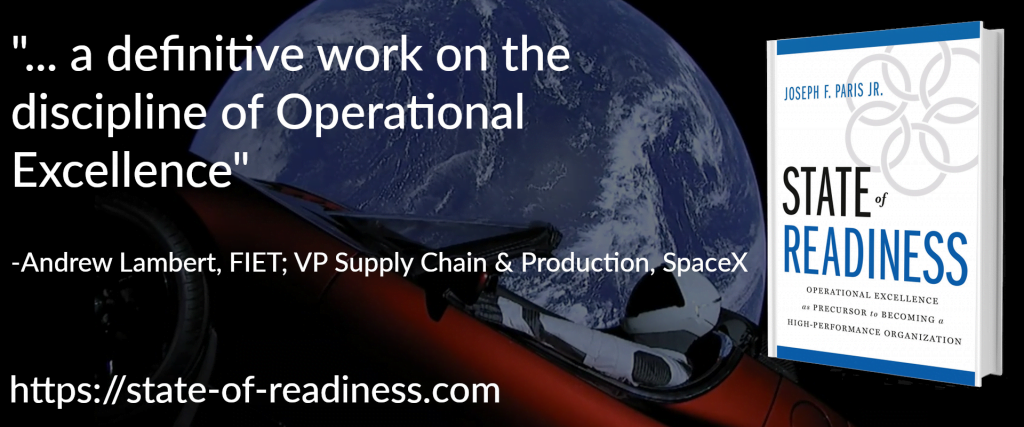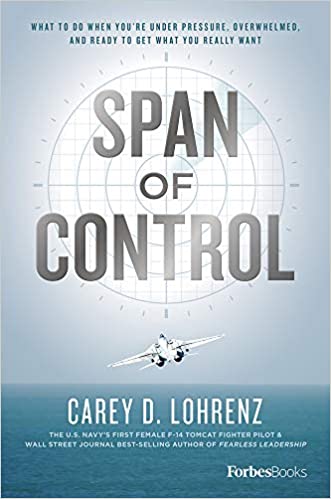Task Overload
We have all been there at least once in our lives. It might be that we are faced with a single, big, fat, hairy challenge and we don’t know where to start. Or it might be that we are faced with several challenges at once; each one not particularly overwhelming, but together are; with each competing for prioritization of our attention. And we become paralyzed not knowing which one deserves our attention most.
In both cases, we dither, we ponder, and we do whatever we must to avoid making the decision to start someplace; anyplace. All the while knowing that not making a decision is itself making a decision – the decision to surrender to the fates.
What are some of the signs that we are in or approaching task overload?
The easiest tell-tales that we are approaching task overload is that we start to collapse inward. We stop doing what needs to be done; we avoid. We look at our screens and just see a bunch of words. We surf the internet and engage in social media instead of spending that time to face the situation – the real situation. We are drowning.
The level of stress might even adversely affect our physical and mental health. We gain weight, we drink more than we should, we subconsciously might have resigned ourselves and our lives to the whatever the future holds – we have given up on ourselves. Not only do we not give a shit about the challenges we face, but we also don’t give a shit about anything at all.
And we might or might not have suicidal thoughts. But even if we are not suicidal, every morning when we open our eyes, the first thought that comes to mind might be; “Fuck, the Lord didn’t take me while I slept and I have to face another day.”
For instance, some of the most challenging life situations we might face is going through a divorce (something I have not had the displeasure of experiencing, thankfully).
Not to stereotype, but some of the women I know who are going through a divorce clean their homes to the point they could be surgical theaters. And some of the men I know devote their time to fixing a hot-rod. Others (men and women) will become fixated on becoming fit or create magnificent gardens.
This is because, when their world is crumbling around them, when they are in a soup of chaos, when everything they thought they knew has been turned inside-out and upside-down, they find comfort with doing something where they alone have complete control.
All these activities serve as coping mechanisms to escape from the real problems they face. But they do nothing to address the challenges.
Business owners are especially susceptible to task overload.
I was working as a consultant in a turn-around situation at a small family-owned business that did about $25-million in annual revenue. And although there were many challenges the company faced, it’s single biggest challenge was that the business owner was in task overload.
His business was running out of cash to the point that he didn’t know if he could find the money to make payroll. Their financial controls hardly existed. Their on-time deliveries were at less than 20%. Their scrap and rework were 10% of revenue. Their engineering drawings were inaccurate. Their inventory and production management were a shambles. Their IT system was over a decade old and in real jeopardy of collapse. They were selling their products at less than their cost to make. Their employees were ineffective and less than capable to successfully do the jobs they were expected to do.
From stem to stern, this company was broken. Indeed, this was the worst run company I have ever seen, and they were on death’s doorstep.
And what was the business owner doing? Bitching about the way the shelves were stocked and the inventory was being handled. He was spending a lot of time stocking them “properly” himself. No kidding. That is what he spent the vast majority of his time doing; bitching and working on the minutia. That, and complaining to me how incompetent and apathetic everyone who worked at his business was.
There was one (of many) instances that I specifically recall. For some reason, the owner became obsessed with finding every yellow plastic inventory storage bin in the facility. Why, I do not know. But he and I spent several hours scouring the shop floor in search of these yellow bins.
Why were he and I, the most expensive resources in the company, looking for these bins that cost a couple of dollars (or less) each? For the half-day each of use were spending, could he(we) have been doing something (anything) that could make a larger impact on his business’ survivability?
Task overload. Working in his business (on things that he had complete control over but whose importance was de minimus) instead of working on his business (on things that truly mattered if he wanted to keep his business alive).
One of the best books on the subject of task overload – how to recognize it and what to do about it – is “Span of Control” by Carey Lohrenz. I even had a signed copy sent to this particular business owner. His response was that he; “doesn’t have time to read more books on how to fix problems I already know I have.” With his knowing his situation, but refusing to act, I am afraid only doom awaits.
- When the house is on fire, pick up a hose and start fighting the fire.
This same client hired a consultant to help fix his business. As an approach, the consultant proceeded to Value-Stream Map the entire business. Either the consultant was unaware how dire a situation was (and getting worse by the day) because it was kept from them, or they didn’t know how to read financial statements.
In any case, the challenges were so acute and so obvious that instead of thinking, they should have started doing. A precious few months were lost and the fire spread and became more intense. That the problems were so wide-spread and obvious to the casual passer-by should have made deciding to act much more easy. But they didn’t.
Eventually, there was frustration that progress was not being made and the owner of the business dismissed the consultant. Tens of thousands of dollars spent, months in delay, and no improvements to the situation were made. Worse, there was nothing to show for the effort – not even the value-stream maps that were (might have been) created.
- How do you eat an elephant? One bite at a time.
When faced with so many problems that you don’t know where to start, set a cadence. Just start lining them up and knocking them down, one at a time. Pick one big problem that you will work on until it is complete, and a few (and just a few) that you will complete that day. If you find you are not completing the daily tasks, then you are choosing too many.
I knew someone who was being crushed in credit-card debt and it (and he) was spinning out of control. What helped him climb out of the mess was a multi-pronged attack; 1) most important was to get his spending under control by imposing a Spartan budget that carved out everything except what was absolutely necessary to live and work, 2) negotiated with the credit-card companies for write-downs and freezes, 3) put extra payments on the credit-card with the lowest balance first; which would more quickly free-up cash to pay down the credit-card with the next lowest balance, and so on, until he was debt-free.
It was painful. Nobody said it was easy. But it worked.
- Blow it up to change the rules.
Once known as “Big Blue” for being a “Blue-Chip” stalwart; the early 1990’s saw IBM’s dramatic fall from grace. Under the leadership of John Akers, from 1991 through 1992, IBM had a loss of $13 Billion; with $8 Billion coming in 1992 and a full $5 Billion of that loss coming in the last quarter of 1992 (at the time, the largest quarterly loss in US Corporate history). Amid all the staggering losses and IBM’s share-price falling from $42 in August of 1987 to $12 in January of 1993, Akers resigned.
These existential threats resulted in the near collapse of the company.
Many analysts and peers called IBM “a dinosaur, an implosion, a wreck”. In one of the most dismal articles on business ever written that I have read; in the January 20, 1993 edition of “The Tech” (the same month Akers resigned), First Boston Corporation analyst Curt Rohrman said, “it’s very ugly”. For a company that is on very brink of bankruptcy, that was an understatement.
Up until this point, IBM selected Presidents and Chairpersons from their ranks; grooming them from the early start in their careers. But desperate times call for desperate measures. The “old rules” weren’t working. So sometimes the best thing to do is throw out the rule-book and make a new set of rules.
Enter Lou Gerstner.
Knowing full well the situation, the Board at IBM decided to not be beholden to tradition and looking within their ranks. They were not even inclined to hire someone who was a technologist. What IBM needed, and the Board understood, was a savvy, experienced, and capable businessperson who could be the leader and change-agent that IBM needed.
So in April of 1993, Lou Gerstner, an IBM outsider and CEO of RJR Nabisco, was called upon to turn-around the fortunes of the company. The analysts on Wall Street were shocked and the joke was; “What does a guy who makes Oreo’s for a living know about technology?”
The answer was “Nothing.” But Gerstner and RJR Nabisco were customers of IBM and recognized the importance of information systems to a business.
In addition, Gerstner had no friends at IBM. He had no emotional ties to what it meant to be an “IBM’er”. He didn’t have to worry about spouses or children continuing to get along. He was not part of the “IBM Community”.

From the book, “State of Readiness”; “Gerstner spent a considerable amount of time examining the present state of IBM, its various business units, offerings, and structure. He had the leadership make pitches about their value propositions and how they functioned. Then, he percolated this information to formulate a strategy for IBM’s future and a path to get there.
The many reforms and restructuring introduced by Gerstner were possible only because he had no past at IBM; the fact that he had previously made Oreos and had no history in the technology industry at all was a strategic and tactical advantage. He was able to evaluate the many problems at IBM objectively, pragmatically, and without emotion. His outsider status gave him the opportunity to redefine and then realign the entire company. But, most importantly, he had the freedom and authority to put new strategies into place without being beholden to the past.”
Sometimes you just have to blow things up, change the rules of engagement.
Conclusion:
You need to understand that these big, fat, hairy, challenges are “wicked problems”; that every decision you make may uncover new challenges (which could be problems or opportunities) and/or influence other dimensions of the challenges you face and planned approach.
The key to success here is to understand and recognize what is within your control and what is not. Focus on what is within your control and delegate what is outside your control. And if its not within your control and you can’t delegate it, endure it.
Focus, Find, Fix, Finish; repeat…
- Focus: Think of the focus action as surveillance. We are looking for broader areas on which to focus our efforts from experience or from incoming intelligence. Our field of vision should be pointed in the right direction to identify problems and opportunities.
- Find: After focusing on a specific domain, our sensors have picked up a target. When we find it, we identify that it is worthy of more attention, and it becomes a validated target.
- Fix: Tracking a target is difficult, especially if it is moving. When we fix a target, we are finding and creating the solution for its precision engagement, and we are handing it off to the resource that will engage it.
- Finish: We engage targets after they have been located, identified, and validated. When we finish the target, we engage it and then assess the mission for success, failure, or something in between. The assessment feeds back into the beginning of the effects chain and helps focus the effort with now-improved intelligence.
“Dans la Légion étrangère, c’est marche ou crève”
“In the Legion, you march or you die.”
—Unofficial motto of the French Foreign Legion
Problems and challenges are not going to sort themselves out. Or, more to the point, they will not sort themselves out in your favor. There is no magical button to push or pill you can swallow that will make it all go away. You need to engage the challenges in a disciplined, deliberate, and meaningful manner. Step by measured step.
References;
- IBM’s $5 Billion Loss Highest in American Corporate History
- Case Study: IBM’s Turnaround Under Lou Gerstner
- IBM’s Turnaround Under Lou Gerstner, Business & Management Lessons, Case Study
- Lou Gerstner’s Turnaround Tales at IBM
- Gerstner: Changing Culture at IBM – Lou Gerstner Discusses Changing the Culture at IBM
- The Decline and Rise of IBM
About the author
Joseph Paris is an international expert in the field of Operational Excellence, organizational design, strategy development and deployment, and helping companies become high-performance organizations. His vehicles for change include being the Founder of; the XONITEK Group of Companies; the Operational Excellence Society; and the Readiness Institute.
He is a sought-after speaker and lecturer and his book, “State of Readiness” has been endorsed by senior leaders at some of the most respected companies in the world.
Click here to learn more about Joseph Paris or connect with him on LinkedIn.








